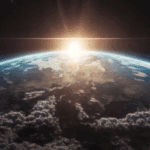
The Day the Sun Disappeared: A Haunting Tale from the Kullu Valley

August 2024—The monsoon rains had woven a lush green tapestry across the Kullu Valley, and our month-long camping retreat near Manali had become a haven of serenity and natural beauty. Nestled in the heart of the Himalayas, our camp was a simple setup—just tents, a cooking stove, and the essentials. We found joy in the rhythm of the days: waking to the misty embrace of dawn, preparing meals over a crackling fire, and falling asleep to the soothing lullaby of the forest.
But that peace was shattered on a night that began like any other.
We had just finished dinner, a hearty stew made from the freshest local produce, and were sitting around the campfire, sharing stories and laughter. The rain had taken a brief respite, and the sky was clear, promising a brilliant sunrise the next morning. We crawled into our sleeping bags, lulled by the crackling fire and the whispering trees, eager for the adventures the new day would bring.
But when 5 AM came, the familiar golden hue of dawn was absent. The world outside our tent remained engulfed in a thick, oppressive darkness. We waited, thinking perhaps it was just an unusually overcast morning. But as the hours dragged on, it became clear that something was terribly wrong. The Sun, the celestial anchor of our world, had not risen.
The World in Darkness
The realization hit us like a tidal wave of dread. At first, it was disbelief—how could the Sun, the one constant in our lives, simply vanish? We frantically checked our phones, hoping to find some explanation, some comforting words that would dispel our fears. But instead, we found a world in chaos.
Social media was flooded with messages of confusion, panic, and fear. News outlets struggled to keep up, their headlines growing more dire with each passing hour. “Sun Fails to Rise: Global Crisis Unfolds,” “Eternal Night Descends on Earth,” “Scientists Baffled as Sun Disappears from Solar System.”
As the day wore on and the Sun remained absent, the temperature began to drop. What had started as a crisp morning chill quickly turned into a bone-numbing cold. We added layers, huddled together, and stoked the fire, but the cold seeped into our very bones. The forest, once alive with the sounds of birds and rustling leaves, fell eerily silent. Even the animals seemed to sense the gravity of what had happened.
The Descent into Chaos
Within days, the situation across the globe had spiraled out of control. The temperature continued to plummet, and the once-vibrant landscapes of the Earth began to freeze over. In Manali, the tourist town below us, panic had taken hold. Shops were looted, supplies hoarded, and the streets filled with people desperately searching for answers—or simply trying to survive.
In the darkness, we received messages from friends and family scattered across the world. My sister in London described how the Thames had begun to freeze, the once-bustling city now shrouded in an icy gloom. A close friend in New York sent a frantic voice message, describing how the skyscrapers were now lit only by the flickering glow of emergency lights as the power grid struggled under the weight of a global crisis. “It’s like the end of the world here,” she said, her voice trembling. “People are scared. We don’t know what to do.”
Back at our camp, survival became our only focus. We rationed food, melted snow for water, and huddled around the fire, sharing what little warmth we could. Every night, as the temperature continued to drop, we wondered if we would wake up to find the Sun returned, if all of this was just a nightmare we could escape.
The World Unravels
As the first week of darkness ended, the world as we knew it began to unravel. The temperature had plunged to -40°C in many parts of the Northern Hemisphere, turning cities into frozen wastelands. Entire ecosystems collapsed as plants, deprived of sunlight, began to die off. Without vegetation, the food chain was decimated. Livestock died by the millions, and the global food supply, already stretched thin, began to fail.
In New Delhi, where I had spent so many years of my life, reports emerged of mass migrations as people fled the freezing cities, seeking refuge in the equatorial regions where temperatures were marginally warmer. But the roads were clogged with vehicles, many of which had broken down in the freezing conditions, leaving people stranded in a sea of darkness and ice.
The internet, once a lifeline of information and connection, became increasingly unreliable as power grids failed. Communication became sporadic, and soon, even the voices of loved ones grew silent. The isolation was suffocating. We were trapped in our camp, cut off from the world, relying only on each other and the dwindling supplies we had left.
The Human Cost
The stories that emerged in the weeks that followed were heartbreaking. In Paris, the lights of the Eiffel Tower were extinguished for the first time since World War II, the city of love now a city of despair. In Tokyo, entire neighborhoods went dark as the cold claimed the lives of those who had nowhere to turn. Hospitals were overwhelmed with cases of hypothermia and frostbite, and as supplies ran out, the sick and the elderly were left to die.
But amidst the despair, there were also stories of incredible resilience. In a small village in the Alps, residents banded together, pooling their resources and knowledge to survive the relentless cold. They built makeshift greenhouses, using every bit of available heat to try and grow food, and shared what little they had with those who were less fortunate. In these moments of darkness, the best of humanity shone through.
In our own camp, we faced a different kind of challenge. The cold had taken its toll, and one of our group, a close friend named Ravi, had fallen ill. The freezing temperatures had weakened him, and without proper medical supplies, there was little we could do. We did everything we could to keep him warm and comfortable, but as the days passed, his condition worsened.
On a particularly cold night, as the wind howled outside our tent, Ravi passed away. His death was a stark reminder of the fragility of life in this new world, and it left us all shaken. We buried him in the frozen ground near the camp, marking the spot with a simple cairn of stones. In the stillness of the night, we stood together, mourning not just our friend, but the loss of the world we once knew.
The Long Winter
As the months wore on, the Earth continued its descent into an eternal winter. The oceans, once teeming with life, began to freeze over, turning the Earth into a giant snowball. The equatorial regions, where many had fled, were now the only habitable areas left, but even there, the conditions were harsh. Food was scarce, and violence became a way of life as people fought over the remaining resources.
In a small town in Brazil, where the last vestiges of warmth lingered, a mother of two young children recounted her harrowing journey to the equator. She had left her home in Argentina when the temperatures dropped below freezing, traveling on foot with her children in search of safety. Along the way, they encountered countless others doing the same, but not all survived the journey. “We lost so many,” she said, tears streaming down her face. “But we had no choice. We had to keep moving.”
In the Kullu Valley, we had moved into an abandoned mountain lodge, a place that offered more shelter than our tent but little comfort. The lodge had once been a place of joy, where travelers from all over the world gathered to experience the beauty of the Himalayas. Now, it was a lifeless shell, its windows frosted over, its rooms filled with the echoes of a lost world.
We survived by sheer willpower, by refusing to give up hope even as the world around us turned to ice. Every day, we faced new challenges—finding food, staying warm, keeping our spirits up. But as the months turned into years, the hope that had once sustained us began to wane.
A Flicker of Hope
It has now been two years since the Sun disappeared. The Earth is unrecognizable, a frozen wasteland where the remnants of humanity cling to life. In the Kullu Valley, our numbers have dwindled, but those of us who remain have formed a tight-knit community, bound by the shared experience of survival in a world that has forgotten the warmth of the Sun.
And yet, despite the overwhelming darkness, there is still a flicker of hope. Scientists, working in underground bunkers and secret laboratories, have made a breakthrough. They believe they have discovered a way to harness the energy of distant stars, to create a new source of light and heat that could save what remains of our world.
It’s a race against time, but for the first time in years, there is a sense that we may yet have a future. The world has changed beyond recognition, and the scars of this long winter will never fully heal. But if the light returns, if the warmth of the Sun—or something like it—can be restored, there is a chance that humanity can rebuild, can find a way to live again.
For now, we wait, we survive, and we remember the world as it was—a world filled with light and life, where the Sun rose every morning, and the promise of a new day was never in doubt. And we hold on to the hope that one day, the darkness will lift, and the light will return to our frozen world.
Hello, I am Aman (: Full Time Traveler :) At the age of 41, in April 2023, fueled by my love for travel and the determination not to remain fixed like a tree, I embarked on a bold journey. Having dedicated 17 years to a corporate job, I chose to transition from a full-time employee to a full-time traveler, driven by the desire to break free from the routine and constraints of a conventional life. Along the way, I not only explored the wonders of travel but also uncovered the transformative power of financial freedom. I realized how it could liberate me to lead a life teeming with adventure, purpose, and fulfillment. Through my blogs, I am passionately sharing my story, aiming to inspire and provide valuable guidance to those, like me, who aspire to weave travel into a life overflowing with limitless possibilities.
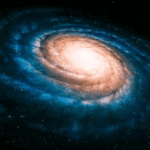







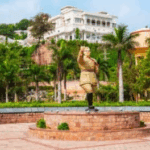

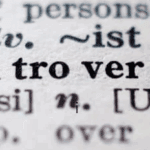


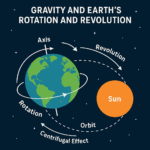




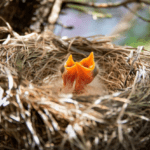

Post Comment
You must be logged in to post a comment.